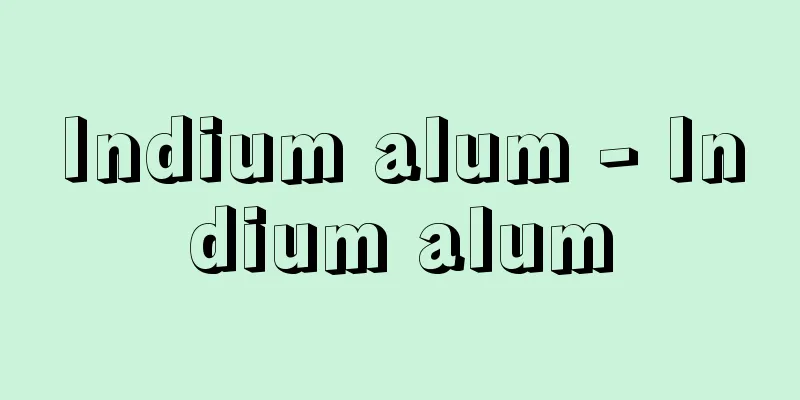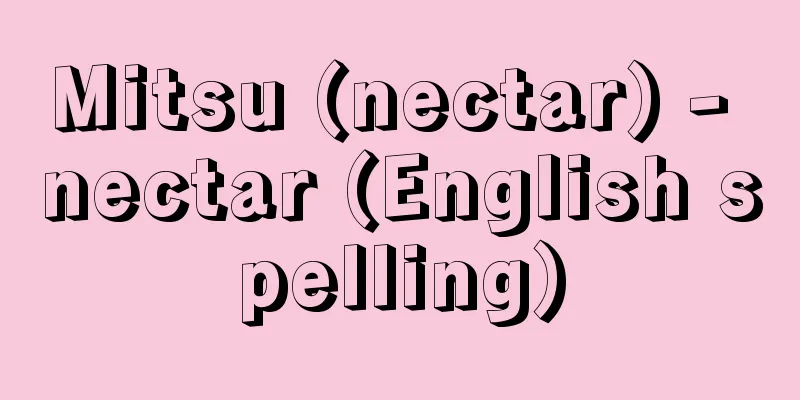Well - Sei

[1] [noun] ① idō (well); i (well). [Book of Changes - Well Hexagram] ② igeda (well). Also, its shape. ※Kōyō Gunkan (early 17th century), item 29: “The bannerman, in front of the Tenkiu (staff officer ), Anayamadono, has prepared a well.” [Zuoshi - Wei Du Fu] ③ (Because people gather where there is a well) Murazato (town); town; city well. [Song Shu - He Cheng Tian Zhuan] ④ In ancient China, this refers to a field of one ri square and 900 mu of land. [Mencius - Teng Wen Gong] ⑤ One of the 64 hexagrams of the Yi. The upper hexagram is Kan ( water), and the lower hexagram is Sun ( wind). It is also called Shuifeng Well. Sun is a tree, and in this case it represents a bucket, and the act of drawing water with a bucket. [2] One of the 28 constellations. The first southern constellation. It is located in the shape of a well near the star μ (Mu) in Gemini. It is the constellation of Well . It is the constellation of East Well. ※Seishuku (1724) vol. 1 "The seven constellations of Well, Gui, Willow, Star, Zhang, Wing, and Riding are arranged like a short-tailed bird." (Notes on the Book of the Later Han Dynasty - Biography of Lang Yi)Ii [Well]Source: The Selected Edition of the Japanese Language Dictionary About the Selected Edition of the Japanese Language Dictionary Information |
[1] 〘名〙① いど。い。〔易経‐井卦〕② いげた。また、その形。※甲陽軍鑑(17C初)品二九「御旗本、まへは典厩(てんきう)穴山殿、せいに備をたて給ふ」 〔左思‐魏都賦〕③ (井戸のあるところには人が集まるところから) むらざと。まち。市井。〔宋書‐何承天伝〕④ 古代中国で一里四方、九百畝の田地をいう。〔孟子‐滕文公〕⑤ 易の六十四卦の一つ。上卦は坎(かん)(=水)、下卦は巽(そん)(=風)。水風井ともいう。巽は木でこの場合つるべをあらわし、つるべで水をくみあげるさま。[2] 二十八宿の一つ。南方第一宿。ふたご座のμ(ミュー)星付近で井の字形になっている部分にあたる。井宿(せいしゅく)。東井。ちちりぼし。※制度通(1724)一「井・鬼・柳・星・張・翼・軫の七宿、その並びやう短尾の鳥のごとし」 〔後漢書注‐郎顗伝〕
い ゐ【井】出典 精選版 日本国語大辞典精選版 日本国語大辞典について 情報 |
>>: Juncus effusus var. decipiens; rush
Recommend
Annaka uproar
...An uprising that broke out in the Annaka domai...
Palmetto
A plant pattern with leaves that spread out like a...
Arabi Movement - Arabi Movement
An Egyptian nationalist movement led by Colonel Ah...
Dinosaur turtle - Dinosaur turtle
…A large sea turtle found in the Late Cretaceous ...
Giant pistol shrimp - Oniteppo ebi
... Generally, pistol shrimps are very similar in...
BOP - Beop
" Base of the (economic) pyramid" / &quo...
Danil, K. (English spelling) DanilK
...Serbian writer Čošić, who made his debut with ...
Empty Castle Plan (English: Empty Castle Plan)
A Chinese Peking opera piece. Based on the Romance...
tor
…The freeze-thaw process cuts the bedrock and cre...
Kruger, Stephanus Johannes Paulus
Born: October 10, 1825, Cape Colony Died: July 14,...
Kanno Disturbance
The term refers to the division of the central br...
Solidification
(1) The change of a substance from a liquid or ga...
International Telephone & Telegraph Corp.
…[Ryozo Aoki]. … *Some of the terminology referen...
Furukawa Green Wave - Furukawa Roppa
A comedic actor. His real name was Ikuro. He was ...
Reflux - Gyakuru
〘Noun〙 Buddhist term. ① To go against the flow of ...



![Hanno [city] - Hanno](/upload/images/67cc972091a20.webp)





